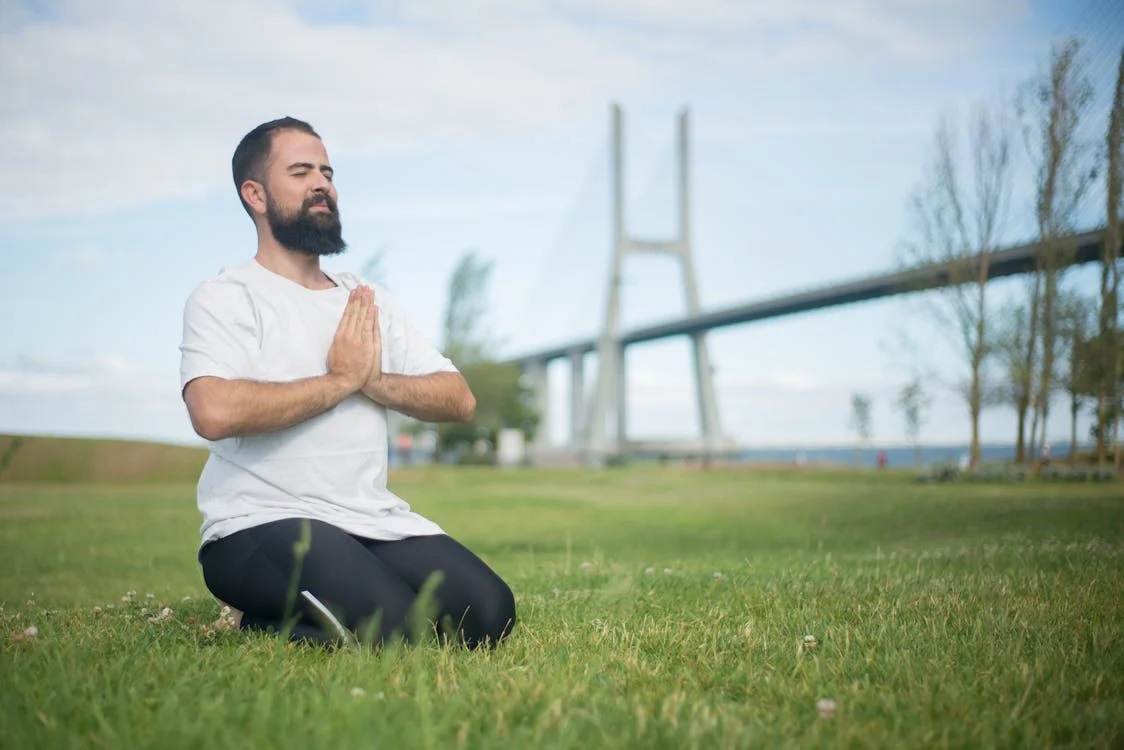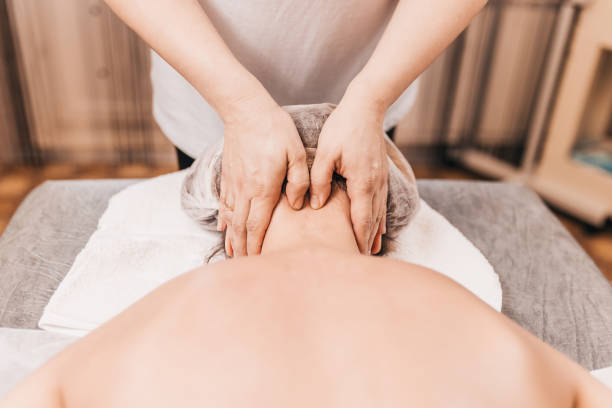Western Psychology Acknowledges that the Most Efficient Treatments Are Based on Eastern Practices
“Some of the most impactful ways we currently treat psychic health aren’t innovative: they have been around for thousands of years” – McLean Hospital, Massachusetts, USA

Western culture often views psychological symptoms as problems to be solved. Eastern practices tend to focus on taking a deeper look into a person’s life circumstances.
“Most people are too caught up trying to survive from day to day,” explains social worker Charlie Patterson. “We are always trying to secure ourselves—emotionally, financially, or whatever. In our quest to make everything secure, all we find is difficulty.”
Patterson discovered yoga practice in the 1980s when he was finally able to end his struggle with alcohol. Patterson wanted to explore what caused his alcoholism and figure out what actually helped him stop drinking.
He returned to college, where he studied philosophy, anthropology, and psychology, and was particularly influenced by a course on transcendental consciousness. Later, he studied with Tibetan teachers. Patterson has worked with a teacher for the last 27 years, which has allowed for a deeper development of his meditation practice.
“What I have learned is that there is a way for human beings to accomplish a complete understanding of their nature,” he said. “When people can do this, they can resolve their fundamental issues and feel completely free.”
Today, Patterson applies the Eastern concepts he learned to his work with patients and in his own life. He stresses that the meditation practice combined with direction, observation, and experience may lead to a new way to understand the world.
A Growing Trend: Yoga and Meditation as Psychic Health Treatment
Patterson’s observations about meditation impacting both his psychic health and the overall health of his patients are not uncommon. Communities in the East have engaged in the practice of awareness (mindfulness) and yoga for thousands of years. These started taking off in popular Western culture only in the previous century and have been gaining popularity in recent decades.
A 2017 interview survey by the National Institutes of Health shows that more Americans report using Eastern-influenced health approaches than in previous years. Hatha yoga and meditation are the most popular of these practices. Over 14% of U.S. adults say they regularly practice hatha yoga or meditation.
In the West, various therapies and medications remain the primary interventions for psychic health care. People may seek alternatives because they tried these conventional treatments without success, or they may resist taking medication because they want to avoid the side effects or long-term effects of drugs.
Several studies support the effectiveness of Eastern practices as a treatment plan. Unfortunately, researchers who would like to make more studies on these practices lack proper funding, as Big Pharma prefers to channel the money into their deadly drugs and vaccines. However, the studies that managed to find their way in the mainstream medicine journals are very relevant.
For example, a 2021 study in JAMA Psychiatry found that kundalini yoga was more effective for generalized anxiety disorder than stress management, another standard treatment for the condition. A 2015 study in the Lancet reported that awareness-based (mindfulness) cognitive behavior therapy was just as effective as antidepressant medication in preventing relapse and for improving quality of life in patients with a history of depression. And of course, practice of awareness does not have any harmful side effects, while the antidepressant medication has terrible ones.
Could Stigma Play a Role in Blending Practices?
While acceptance about the importance of psychic health is increasing, stigma about it or seeking psychic health care remains an unfortunate reality, even though such conditions are common. In fact, over 50% of people in the U.S. experience a psychic health condition at some point in their lifetime.
People with psychic health concerns may resist going to therapy or taking a proper, fully natural and beneficial treatment, because doing so would be an admission of “having a problem.”
As a therapist influenced by Eastern views, Patterson looks at patients entering treatment programs through the lens of acknowledgement and validation. “I don’t tell them there’s something wrong with them,” he said.
“To begin with, I say, ‘Welcome. I see you are struggling. You are not alone in this—let’s talk about it’,” he explains. “It’s getting the person out of their personal prison, which is where we all live until we elevate our consciousness and connect deeper and deeper with God.”

Through practices such as meditation and hatha yoga, as well as communion with certain Godly aspects, and with the Godly Attributes, people can find relief from psychic health symptoms while not necessarily viewing such practices as treatment, but as ways to elevate their consciousness.
Eastern philosophy’s viewpoint on life may also provide comfort. If we are all connected between us and, at the same time, with God, then we know that we are not alone.
Taking a Whole-Body Approach to Psychic Health
Western medicine and psychology have traditionally viewed the consciousness and body as separate entities. Eastern practices take a holistic approach and also incorporate spirituality.
In recent years, Western clinicians have been embracing certain Eastern healing practices that date back thousands of years. According to a 2017 article, therapists who integrate yoga into standard treatment can extend the care they provide while also teaching techniques, such as breathing patterns, that patients can use between sessions.
More specifically, Eastern medicinal practices have influenced the field of holistic talk therapy.
To treat patients, holistic psychotherapists use conventional Western treatments, such as talk therapy, as well as Eastern methods including:
- Acupressure
- Medicinal plants
- Massage therapy
- Yoga practices
- Meditation
Common Eastern Practices Embraced in the West
There are dozens of alternative and complementary practices that have been incorporated into Western medicine. Many of them can be found in popular therapies, like dialectical behavior therapy (DBT).
These non-traditional methods may not work for everyone, depending on other conditions. It is best to seek advice from your healthcare provider in order to find out which of these natural practices are adequate for you.
Practice of awareness (mindfulness)
Practice of awareness (mindfulness) is focusing the consciousness in the present moment.
Human beings have a natural tendency to worry about the past or plan for the future. We also tend to become attached to various aspects, whether these are physical objects, relationships, or even thoughts. Such clinging can be a source of suffering, since they do not last forever.
“We have these aspects that we regard as reality,” Patterson explains. “We fixate on them, but they are impermanent. And the impermanence causes distress. We always make plans, and always expect the objects of our attachments to last.”
Some degree of remembering our past or planning for our future is essential to functional living. However, too much time spent outside of the present moment can lead to psychological distress.
Through practice of awareness, people learn to notice and accept the present moment, even when the present brings discomfort. They can learn to acknowledge the impermanence of life.
“The whole purpose of this path is to be present here and now and see clearly,” Patterson said. “That’s it, along with recognizing our nature. If we do that successfully, then there’s no inner conflict.”
Meditation
Meditation is a practice that cultivates awareness. In meditation, people sit still for set periods of time to experience the present moment. Meditators often focus on their breath or on a spiritual aspect as a grounding point. They can also use other forms of grounding, such as noticing bodily sensations.
While meditating, people will inevitably notice thoughts and emotions that arise. If meditating, it’s important to nonjudgmentally observe such experiences as they come up. Then, the person meditating can bring awareness back to their breath or focus point and into the present moment.

Many people find meditation challenging at first—which is understandable, since many people may have a hard time quieting their common mental and relaxing their bodies. Their heads become flooded with thoughts. They struggle to sit still.
For beginners, it can be helpful to meditate for short periods of time, such as 14 minutes, and eventually increase the number of minutes per session. Often, building up a meditation practice slowly and over time can make it easier to turn into a habit.
According to Patterson, regardless of the method chosen for meditation, it’s important to understand that the meditator gains wisdom and insight when they take the opportunity to practice regularly.
“It is like if you get a jar of water out of the muddy swamp and put it back on your desk,” he said. “That’s how we are from day to day. But if the contents are allowed to settle, there’s clarity you can see through the jar.”
Patterson advises people to practice meditation without expectations—which can go against our subconscious desire to plan. “Eventually, people can begin to experience a shift in their perspective,” he said. “This allows them a sense of ease because they have a more and more elevated consciousness and closeness to God.”
Research supports the power of meditation. A 2008 study showed that compared to novice meditators, experienced meditators had increased activation in areas of the brain associated with concentration. They also had less activation in the amygdala, a part of the brain associated with emotional processes.
According to the study, long-time meditation leads to increased awareness and decreased emotional reactivity. This indicates attention is a trainable skill that can be developed through meditation.
Yoga
Yoga is an ancient practice involving both the body and the consciousness, that originated in India and is proven to treat disease and other forms of distress. The practice involves movement, breath, and meditation.
There are many types of yoga, hatha yoga, karma yoga and kundalini yoga being the most popular.
Yoga has been found to reduce pain and to increase quality of life for many people. Specifically, the practice has shown to reduce muscular tension, relieve stress, and reduce depression and anxiety, among many other benefits.
Like meditation, yoga is an ancient healing art that has become more accessible through technology. Many people practice yoga in traditional classrooms or on retreats. In such settings, people value the guidance from qualified instructors and unison effect due to the presence of others. However, there are also online yoga courses and retreats, for people who, for various reasons, cannot attend the on-site ones, for example, here.
Acupressure
Acupressure is a form of traditional Chinese medicine (TCM) that involves the placement of pressure from practitioner’s fingers on key points on the receiver’s body. Approximately 25% of acupressure patients in the West are referred by Western medicine clinicians.
According to TCM, the body’s energy, qi, flows along key points, or meridians. Each organ in the body is aligned with one of these points. When pressure or heat are placed at meridians, they can influence the flow of energy at specific organs.
From the view of TCM, psychic illnesses occurs when there is an imbalance in the body’s energy system. According to TCM, various organs—not just the brain—are involved in psychic illness, and practitioners of acupressure target the energy of these organs in their healing approaches.
Materialistic scientists are still not completely sure of acupressure’s effectiveness in treating psychic health conditions, although the research is promising.
In the treatment of depression and anxiety, for example, it is proven that acupressure can release endorphins. Research suggests that acupuncture creates deep relaxation and can release the body’s natural melatonin in patients suffering from anxiety.

Psychic Health Treatments Based on Eastern Practices
Even before the practice of awareness, meditation, and yoga became popular with the public, many Western clinicians were aware of their importance. This is seen particularly in the application of third-wave cognitive behavior therapy.
Developed in the 1960s, cognitive behavior therapy (CBT) is an evidence-based treatment that explores the effect of a person’s thoughts on their emotions and their behaviors.
A CBT therapist challenges a patient’s beliefs with the aim of making the patient’s behavior more functional. They can help patients become more aware and conscious, and unlearn problematic habitual thought patterns.
CBT incorporates behavioral techniques that may include thought stopping, challenging irrational beliefs, using literature as therapy, relaxation, and breathing exercises.
Third-wave CBT incorporates Eastern practices. It includes acceptance and commitment therapy (ACT), mindfulness-based cognitive therapy (MBCT), mindfulness-based stress reduction (MBSR), and dialectical behavior therapy (DBT).
Acceptance and Commitment Therapy
Developed in the 1980s, ACT emphasizes that our thoughts are not the same as reality. Unlike classic CBT, ACT does not distinguish thoughts as rational or irrational.
Patterson explains: “We give thoughts all the power that there is. In fact, many of us tend to regard our own thoughts as the ultimate authority. That’s an issue, and that’s what this whole spiritual practice works against.”
According to a 2008 article, ACT is closely aligned with Taoism, an ancient Chinese religion and philosophy that emphasizes being in harmony with the universe.
Central to both ACT and Taoism is the idea that direct experience and observation of that experience help reduce struggles. Through ACT, patients learn to accept uncomfortable thoughts they may have, instead of pushing them away, and then transcend them.
Mindfulness-Based Stress Reduction (MBSR)
Developed in 1979 by Jon Kabat-Zinn, stress reduction based on awareness was developed to ease stress, pain, and illness. The eight-week treatment combines meditation, yoga, and group discussions to help patients identify and tolerate sensations in their bodies.
By developing and practicing awareness, patients can identify which thoughts and emotions are linked to physical distress. They can learn to accept and ease psychic and physical pain.
Mindfulness-Based Cognitive Therapy (MBCT)
Cognitive behavior therapy based on awareness is an offshoot of Kabat-Zinn’s stress management. In the 1990s, clinicians began to note the effectiveness of this component of classic CBT.
Clinicians often provide MBCT in a group therapy format. Unlike classic CBT, which focuses on replacing distressing thoughts with beneficial ones, MBCT helps patients become aware and accepting intrusive and difficult thoughts and emotions, and then transcend them.
Dialectical Behavior Therapy
DBT, developed in the 1980s as a treatment for borderline personality disorder (BPD), is now considered an effective treatment for many psychic health conditions.
The treatment includes personal psychotherapy, skills groups, phone coaching from the therapist, and consultation groups for DBT therapists. DBT emphasizes Eastern concepts such as acceptance and transformation. Patients learn to practice awareness as a core skill of DBT, and DBT therapists need to maintain high awareness during the entire session.
An Ancient Perspective on Modern Problems
An Eastern view asks: What if struggling is part of the human condition, in order to evolve spiritually? If we can’t avoid our pain, are there ways we can accept it, and then transcend it?
“Once we start asking these questions, we can parlay into a desire not to dwell in the past, not to have anxiety over the future,” Patterson said. “But to live more fully and completely in the timelessness of now, and closer and closer to God.”
yogaesoteric
July 26, 2024
